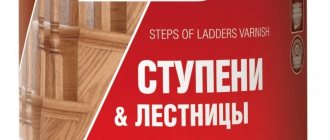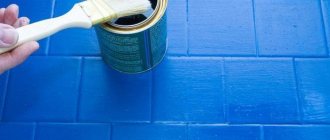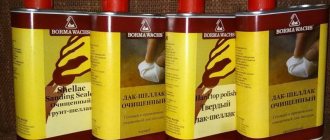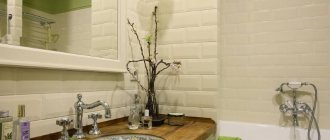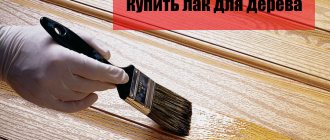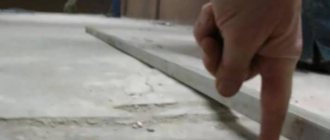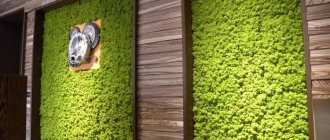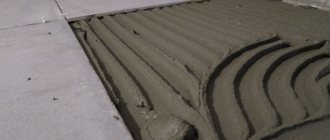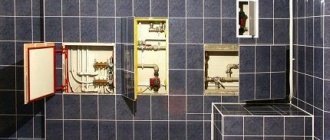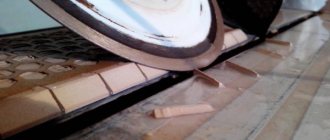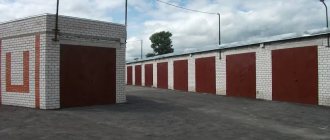Gypsum is a natural material of plant origin. It is often used nowadays to decorate gypsum tiles and is an excellent interior decoration. Gypsum mixtures are often used in the fields of art, construction and medicine. However, this mineral must be protected, as it is quite fragile and quickly deteriorates. A plaster varnish is used to help strengthen and protect the material and create a stunning finish similar to natural stone.
Using plaster
Decorative gypsum stone is produced by many manufacturing plants; it can even be created at home using dry powder. An aqueous gypsum mixture is prepared, which is poured into molds in which it hardens. The result is attractive figures, tiles, or other products that can be used to decorate rooms. They can be given any color you want by adding the necessary paint or pigment. To enhance the strength of a gypsum product, special modifiers and sand are added.
Gypsum stone has a beautiful shape, it is very similar to artificial tiles or bricks, and looks very beautiful when facing doorways and walls. In addition, it can be used in combination with plaster, tiles, wood, photo wallpaper and regular wallpaper. Gypsum stones are used either as fragmentary or complete finishing of premises. The stone is used for cladding fireplaces and emphasizing the bases of columns. Gypsum stucco is sold in any hardware store, and moldings made from this material are also sold, used to decorate ceilings and walls. From gypsum powder you can create very beautiful figurines, figurines for the garden, and all kinds of sculptures.
Interior ideas
When choosing a brick finish to decorate a particular interior, it is important to choose the right area, as well as the color of the material, which will optimally suit the palette of the interior and furniture. Let's take a closer look at how to organize the decoration of different rooms with decorative bricks.
Decorative brick in the living room
This is a special room in the apartment that requires a careful approach to decoration - after all, this is where festive events with friends and relatives and family gatherings will be held. In newfangled interiors, you can often find living room designs with an emphasis on brick walls. It is worth noting that the masonry itself is an excellent decorative element that does not require additional decorations. If desired, you can display a gallery of family photographs, a display of artwork or posters on a brick wall.
You can choose any color of brick in the living room - the main thing is that it is in harmony with the interior. In this way you can decorate one of the walls or individual sections. The decoration of the room will be a brick fireplace or a niche in the wall, creating a special atmosphere of comfort. If the living room is combined with a kitchen, a good option would be a small brick wall that acts as a zone divider.
Decorative brick in the bedroom
Considering the fact that brick looks quite warm and attractive, it is perfect for decorating a bedroom. The material combines well with other types of cladding. Often, brickwork is used to decorate the wall at the head of the bed or the one on which the television panel is installed. If the bedroom is narrow and the bed is located with its back side to the long wall, it is this wall that is decorated with brick. This technique helps to visually move the wall away and expand the room.
Decorative brick in the hallway
In small corridor spaces, white decorative brick with a glossy surface will look best. This design will help increase the area and make the space freer, which is typical for modern minimalism, as well as the Scandinavian style.
It is better to decorate with red brick in fragments, decorating in this way corner areas, areas at the junctions of walls, arched areas and doorways. Masonry can take part in zoning a spacious hallway.
Decorative brick in the kitchen
The kitchen, even if it is quite spacious, is not recommended to be completely covered in brick, so as not to end up with a basement interior. It is much better to use masonry as a link between different types of finishes. Determining the wall where the brick will be located occurs according to the following principle: where natural light falls, there is a place for masonry. For a wall made of red brick, which has the ability to absorb light, it is better to consider additional lighting.
Since the hygroscopicity of the material does not allow it to be used as an apron, here you can use imitation cladding - PVC panels or brick-like tiles.
Decorative brick in the bathroom
The bathroom has a specific microclimate, and decorative brick is not the best option for cladding. In extreme cases, the masonry will need to be coated with agents that prevent the formation of mold, as well as antibacterial compounds.
From an aesthetic point of view, the combination of the rough surface of decorative bricks with snow-white plumbing fixtures has a very attractive appearance. Instead of brickwork, moisture-resistant wallpaper, tiles or plastic panels that imitate it are also used in bathrooms.
Advantages of gypsum
Various building mixtures are made based on gypsum, both for interior and exterior use. Dry gypsum is added to many putties, plasters and glues as an excellent binding component. This material is added to many finishing and building materials because it has the following advantages:
- external attractiveness;
- low weight, which is combined with high strength;
- creates effective insulation of heat and noise;
- it can be used to make attractive, unique products for interior and exterior decoration;
- environmentally friendly and safe material for human health;
- fungi and mold do not settle on it;
- is a vapor-permeable, breathable material;
- very easy to process, it can be applied to any type of surface;
- With the help of accessible, extraordinary tools, you can easily change the shape of gypsum products.
How to glue
The structure of gypsum stone always remains the same, only its shape and size differ. This means that the composition of the glue used will depend on the base on which the stone will be installed. Among adhesives, three groups can be distinguished:
- special compositions with a gypsum base;
- compatible styling compounds;
- improvised means.
Each of them deserves special attention, so it is worth considering them in more detail.
Special adhesives
When decorating interior or exterior, you most often have to attach gypsum stone to plaster, pure concrete or drywall. In this case, the best solution would be to use special mixtures. Manufacturers and sellers call these compounds gypsum adhesives. In the original, it is a dry mixture that contains gypsum or alabaster, as well as special additives called a plasticizer. Their task is to make working with glue easier. With these additives it acquires good plasticity and hardens longer. This glue is also used to repair damage in natural stone. When choosing an adhesive, you should pay attention to three parameters:
- presence of quartz sand;
- required amount of water;
- hardening time.
In addition to the main components, quartz sand can be added to the glue. This is done to increase the volumetric mass and reduce the cost of the production process. Quartz sand works well as a filler in ordinary cement-sand mortar. But for gypsum glue it has practically no benefit. That is why it is better to purchase a composition that does not contain sand. It will cost more, but installation of gypsum stone will be easier. The quality of a particular glue sample depends on how much water is required to prepare the mixture. If less than 0.3 liters per kilogram is needed, then we can judge that the percentage of alabaster in the composition has been reduced and the amount of other additives has been increased. It is better not to purchase such glue. It all depends on the fact that for high-quality and reliable fastening of the stone to the surface, a sufficient amount of gypsum is required.
When choosing, you should pay attention to the drying time of the solution. Manufacturers who are responsible for quality try to achieve a target of 30 minutes. This allows the installation of gypsum stone to be carried out quickly, since you do not have to hold it with your hand for a long time near the wall. In this case, the glue can be prepared in smaller portions, which eliminates its overuse.
The recipe for making gypsum glue is usually applied to one side of the package. The dry mixture is measured according to the specified parameters and poured into a container with water. After this, it must be mixed thoroughly. A powerful drill or a special construction mixer will help with this. It is important to achieve a homogeneous mass without lumps. After this, it is important to let the mixture sit for a few minutes to allow the hydration process to occur. Manufacturers may indicate not only different amounts of water, but also the time to reach working condition.
Before finishing the surface with gypsum stone, it must be coated with a primer. In some cases, several layers may be needed. It is important to allow time for complete drying. If installation will be carried out on a brick wall, then the seams need to be aligned. The primer is required to prevent water from leaving the glue too quickly. To work, you will need a flat and notched spatula. Using an even spatula, gypsum glue is applied to the stone. To remove excess it, you need to go through it with a comb. In this case, the thickness of the glue for proper installation should not exceed 1.5 cm.
To gain full strength you will have to wait a day or more. Everything will depend on the humidity and temperature in the room. In some cases, the time period increases to one week. It is better to wait this period without additional processing of the stone.
Compatible formulations
In addition to gypsum adhesives for facing stones, you can successfully use adhesives for ceramic tiles or liquid nails. There are no special recommendations for using the first one. It is prepared in the same proportions as for use with tiles. In terms of tensile strength, tile adhesives have high performance, but this does not have any practical benefit for gypsum stone. When using tile adhesive, you should keep in mind that it takes longer to dry than gypsum adhesive. In this case, the stone may change color because it will draw moisture from the gray composition. The price of such compositions is higher than that of gypsum glue.
Installation of gypsum stone can also be done using liquid nails. But this applies more to those cases when it is necessary to repair a small area or replace several stones. Liquid nails are applied to the gypsum stone in spots or in stripes. After this, you need to wait a few minutes for partial setting and apply the stone to the surface. Liquid nails are an environmentally friendly material, so they perfectly complement gypsum stone. In addition, this glue does not need to be prepared; just squeeze it out of the tube and use it.
Available means
Alabaster is most often used for putty work. But it can be used for gluing gypsum stone to various surfaces, except metal. Before using this method, it is necessary to prime the surface with latex primer. Alabaster dries quite quickly, so to delay this process, you can add glue or soap to the diluted composition. Another non-standard option for gluing gypsum stone is finishing or starting paint putty. It must be mixed in the proportions recommended by the manufacturer. It is applied to the stone in a layer of no more than 1 cm. This option is also great for gluing several fallen stones.
Using plaster varnish
Many people stain plaster products because they are sold in a standard gray and white color. Thanks to painting, the rate of moisture absorption by plaster decreases. In addition to paint, you can use a special varnish to cover artificial stone. Many people believe that varnishing plaster is a very suitable way to decorate stone in an original way.
The varnish is used as a coating approximately 5-10 days after the tiles are laid. During this time, the adhesive composition usually dries completely. Varnish for decorative gypsum stone is available in various types; it can have different characteristics and composition. Many types of plaster varnish are affordable, absolutely safe for human health, allow the plaster to be breathable, and do not clog the material. The use of varnish significantly reduces the rate of destruction of gypsum, makes its surface more durable, and also the products become more attractive and original.
Some general recommendations
When working with brickwork, you need to remember several important points: • A fresh brick wall will be ready for painting only a year after laying. • The brick should be painted horizontally, preferably with a brush, in order to thoroughly paint over all the irregularities. • When brickwork is exposed, you need to wear special glasses and a dust mask, cover the floor and windows with a special film, and remove all pieces of furniture from the room. • The service life of a painted wall is five years, then you need to repaint it again.
Did you like the article? Then support us, click
:
vote
Article rating
Shellac varnish
This type is usually used when performing decoupage and finishing work. This varnish is made on an alcohol base and is considered an excellent option for coating a gypsum base. Shellac can be applied over any type of modern paint and looks very good over metallics. This solution creates a thin layer of polish that looks very beautiful. It is used not only for plaster, but even for processing wooden furniture.
Shellac is made both transparent and colored, so it can be applied without first using paint. Some types of tint varnishes treat the stone, giving it the effect of artificial aging. Many experts mix shellac with rosin in a one to one ratio. This impregnation for plaster creates a beautiful protective layer on the surface, which completely eliminates the occurrence of stains. Using this plaster varnish, ordinary stone takes on the appearance of marble.
Tips for work
The modern construction market offers a wide range of varnishes for brick and stone. There are products at both high and low prices. Many will enjoy aerosols, which will greatly facilitate repair work.
It is important not only to apply the composition correctly, but also to select it correctly in advance:
- When purchasing varnish for exterior use, pay attention to its level of moisture resistance; it should be as high as possible to provide high protection against water and ultraviolet radiation.
- You need to apply the mixture in two or three layers, first allowing each previous coating to harden. This approach will prevent drips.
- To give the surface a more interesting look, many designers recommend painting the joints between the bricks in a different color, which will, in addition to a beautiful appearance, also provide a greater level of protection for the base.
- For concrete surfaces, it is recommended to use a polyurethane composition, as it will provide maximum protection from moisture. Varnishes can also be applied to foundations or load-bearing surfaces.
- Polyurethane mixtures have an affordable price and economical consumption, which is why they are most often used for outdoor work.
- For interior decoration, it is recommended to use silicone-acrylic mixtures, as they do not have a toxic odor and add increased shine to the surface.
Varnishes for brick and natural stone, when used correctly, can be an excellent protector for your home. They will not only protect the walls from external influences, but will also give them an attractive appearance.
See below for more details.
Acrylic varnishes
This type has an acrylic base, with the addition of modifiers, water and special resins. The acrylic composition is not very thick, its consistency is similar to cream, and is used for indoor and outdoor work. Acrylic-based plaster varnish is used as a topcoat because it creates a highly durable layer that is water-repellent. Special additives in this varnish protect stone and tiles from fading and the negative effects of ultraviolet rays.
In stores you can buy glossy, matte and semi-matte acrylic varnish for coating plaster. The glossy look gives an attractive shine, but it strongly reflects light rays, this nuance must be taken into account during painting. Matte acrylic varnish makes the product solid, it looks very impressive and expensive. After drying, the acrylic varnish becomes transparent and keeps the stone attractive and protected for a long time. You can use acrylic varnish for plaster stones indoors, because acrylic compounds are safe for humans, apply very easily and simply, and dry quickly enough.
How to cover decorative brick in an apartment?
In modern construction, artificial stone is widely used both for interior decoration and for external cladding of facades. This material looks very similar to natural stone and at the same time has many advantages.
Preparing the area and material for work:
Before laying gypsum tiles on the wall with your own hands, follow a number of steps:
- Clean the surface of the wall or other area from traces of previous decor and level it.
- Prime the wall with impregnation. It is also advisable to prime the stone itself. The primer will help reduce the absorption of the inner surface of the stone and remove dust. Let the primer dry.
- Start laying gypsum tiles by laying out several rows on the floor. Based on the resulting pattern, make markings and cut off the required pieces. Perform pruning with a hacksaw or grinder.
Surface markings:
To achieve perfect evenness of the masonry, use a building level or an electronic level. Don't forget to leave room for baseboards, floor coverings, etc.
Choosing adhesive for gypsum tiles:
The choice of adhesive for gypsum tiles depends on the installation method:
- With the seamless laying method, liquid nails, silicone sealant, polyurethane foam or other contact adhesives are applied pointwise in the middle of the tile.
- When laying decorative tiles under brick under jointing, use special gypsum glue or polymer putty, which are evenly applied to the entire surface to be decorated and to the tile.
- It is not advisable to use cement mortar. It takes longer to dry and during this time the plaster absorbs excess moisture. If you still use this glue, then you definitely need a priming step for high-quality installation.
Rules and subtleties of the gluing process:
Decide in what order you will lay the stone. If the stone is of different sizes, alternate large, medium and small tiles. In the second row, change the order. If the stone is the same size, then to start the second row, part of the stone needs to be sawed off with a hacksaw so that the seams of the top row do not coincide with the bottom.
In order for the corner to look beautiful, the tiles need to be cut using a miter box and a hacksaw at an angle of 45 degrees. Wall tiles are glued mainly horizontally. Gluing is done both from above and from below. Work starts from the corner. The edge of the furniture adjacent to the installation site is covered with masking tape. It is removed in small parts immediately after gluing two or three tiles, until the glue has dried. The nuances of installation depend on the chosen method:
- Seamless masonry. Before gluing gypsum tiles to the wall using this method, you need to check its geometry. Sometimes the dimensions of the parts differ from each other. In this case, the middle of the wall is laid out as perfectly as possible. After all, she is the one who always comes into view.
- Masonry for jointing without filling the seam. Often the seams are not filled, since gluing gypsum bricks to the wall using this method is cheaper and faster. The main difficulty is to apply the adhesive very evenly and thinly to the wall. Use a spatula without teeth for this. If the glue comes out from under the tiles, spread it evenly along the seam with a wet brush.
- Masonry for jointing with joint filling. The seam is filled with a mounting gun or a special bag for unstitching.
- To fill the joints, use a special grout for gypsum brick tiles. Dilute the powder according to the instructions, place it in a cone bag and fill all the seams. The width of the opening in the bag is less than or equal to the width of the seam. After application, leave to dry to the consistency of softened plasticine. Then use a special spatula to remove the excess. A relief characteristic of such masonry should be formed. After drying, clean the tiles with a medium-hard brush to remove grout residue. Treat the entire lined surface with polyurethane or acrylic varnish, or any moisture-repellent agent to create reliable waterproofing protection and ensure long-term operation.
Oil varnishes
Oil varnish can be used to apply to stones and other plaster products. It is made from artificial resins and special herbal additives and has an oily texture. After drying, a protective layer is formed that protects the surface from harmful effects and various damaging factors.
They produce glossy and matte oil-based varnish for plaster. A special solvent is used to dilute it. To make this varnish with any shade, you can purchase a special tint material that will give the stone or tile an attractive, original shade. It is important to consider that oil varnish darkens a little after drying.
Improving the performance of gypsum finishes
Manufacturers of alabaster cladding most often offer consumers products that have already undergone a process of improving characteristics and are varnished. The price of such material is higher due to the cost of additional processing. Knowing the optimization technology, you can purchase gypsum cladding without protective treatment, for example, the popular hand-made Monte Alba decorative tiles, and independently improve the properties of the material, and then varnish it. Let's consider what the pre-treatment of gypsum products is before applying varnish, types of varnish compositions and methods of their use.
Impregnation of gypsum tiles with hydrophobic agents
To neutralize the hygroscopicity of gypsum products, they are hydrophobized, which consists of impregnation with water-repellent compounds (hydrophobizers) based on organosilicon polymers. Due to the deep (up to 20 mm) penetration of water repellents into gypsum without the formation of a film, porosity is reduced, but the vapor permeability of the products is maintained, the degree of hygroscopicity and the susceptibility of tiles to mold are reduced.
Impregnation allows you to preserve the attractive appearance of stone and decorative stone tiles for a long time
Water repellents are offered by manufacturers in the form of ready-to-use solutions, as well as concentrated formulations that require dilution. The method of use is indicated on the packaging of the mixture.
The general requirement for the use of hydrophobic compounds is that they be applied to completely dry gypsum tiles that are free of dust. Gypsum products are processed on all sides in two layers until saturated, without waiting for drying. This processing method reliably isolates the cladding not only from the humidity of the outside air, but also from the moisture of the base material. For application, depending on the area of the surface to be treated, a brush or roller is used.
The treatment should be carried out wearing protective glasses and gloves, avoiding contact of the composition with exposed skin. Contamination of adjacent glass and metal parts with a water-repellent agent must be promptly eliminated, as the composition hardens quickly.
Examples of well-proven hydrophobic compounds include:
- water-repellent silicone composition White Hill;
- silicone impregnation “Optimist C405 – Natural stone”;
- a range of Tiprom water repellents.
Silicone waterproofing impregnation – Natural Stone
Varnishing the plaster finish
After hydrophobization of the alabaster tiles, the base is faced by laying gypsum products on an adhesive mixture selected in accordance with the type of wall surface. A day after installation is completed, they begin to decorate the finish with paints.
To protect the artistic layer of the cladding, it is necessary to cover the tiles with a protective varnish layer. This operation begins after finishing the decoration, but not earlier than 5-10 days after finishing laying the tiles, so that the tile adhesive under the finishing not only hardens, but also dries.
To apply a protective coating to gypsum tiles, acrylic or oil varnish is used. These materials differ in properties, so we will consider each separately.
Protecting alabaster tiles with acrylic varnish
Acrylic varnish is a ready-to-use aqueous dispersion of resins, a milky liquid, the application of which to interior and exterior decoration is used for protective and decorative purposes. This solution is resistant to cracking and forms a durable, transparent film on the surface, which after drying can be removed using a special solvent.
The acrylic-based coating is resistant to detergents, moisture and ultraviolet radiation, and temperature fluctuations. The composition is odorless, harmless to humans and the environment, dries quickly and becomes transparent. Acrylic varnish is diluted with water to the desired consistency and applied to the surface with a brush, roller or spray.
Varnish for natural and piece mineral surfaces
Acrylic varnish is available in three types: glossy, matte or semi-matte.
When applying a glossy solution to gypsum tiles, it should be taken into account that the cladding will receive shine and glare from the lighting, which will distort the colors of the tile decoration.
Matte acrylic varnish will preserve the velvet surface of the tile, imitating rough-cut natural stone, without changes. This composition is an ideal protective coating for Monte Alba tiles.
The semi-matte type of varnish occupies an intermediate position between the two described types in terms of its effect on the cladding.
When dry, a thin film is formed that prevents moisture from being absorbed into the plaster.
When decorating gypsum cladding, which was painted with water-based paints, 10% acrylic varnish can be added to the emulsion to enhance adhesion to the gypsum. After covering with two layers of such paint, only one layer of varnish can be applied to the alabaster tile.
Important! If you do the opposite, add paint to the acrylic solution, the coating will end up with paint-colored stripes, which is not always desirable.
An example of a successful choice of protective and decorative coating for gypsum finishing is Finnish paint and varnish products.
Coating gypsum tiles with oil varnish
Oil varnish is a solution of natural or artificial resins in oils of plant origin. After application to the base, such varnish first forms a film on the surface of the layer, and then dries throughout its entire thickness and serves as a strong protection for the surface from mechanical and physical damage.
Oil varnishes, like acrylic varnishes, are available in glossy and matte finishes. To bring the solution to the desired consistency, special thinners are used that do not change the characteristics of the varnish. Oil-based varnishes are available colorless or transparent, but have some tint, so when choosing a material for coating gypsum tiles, you need to take into account the compatibility of the varnish shade with the color of the alabaster finish. All oil solutions, including colorless ones, darken a little after drying, which also needs to be taken into account when decorating gypsum tiles.
Using yacht varnish
The most durable coating is provided by yacht oil varnish, so its use to protect plaster cladding is most advisable. After thoroughly mixing with the thinner, the varnish is applied to the finish in a thin layer with a brush or roller. The solution should be well distributed over the surface, avoiding the formation of drips. Yacht varnish dries, depending on the room temperature, in about a day.
Varnish for gypsum tiles is an indispensable thing for giving the surface the desired shade or glossy shine.
After the first layer has dried, the cladding is inspected for the presence of drips, which must be carefully sanded with fine sandpaper before applying the second layer. The second layer of varnish also dries for about a day, after which the varnished finish is wiped with a clean, damp, soft rag to eliminate any residual adhesion.
Decorative tiles "Monte Alba", covered with a protective layer of yacht varnish, despite the corrugated surface, are easier to keep clean and last longer.
Varnishing rules
Thanks to varnishing, the performance characteristics and attractiveness of gypsum can be significantly improved. Everyone decides for themselves what varnish to coat a decorative gypsum stone with, because each product has its own shine, color, shade, and other characteristics. Here is a list of basic rules and recommendations that must be followed during varnishing to obtain the best result:
- Before using varnish for plaster figures, all elements must be thoroughly dried. If glue, enamel, paint, or other coatings were used, they must be completely dry;
- Any plaster products, including figurines, figurines, and others, must be kept at a temperature of about 20 degrees for 24 hours. If this is not done, the varnish coating can very quickly lose its performance characteristics;
- If rough products are to be varnished, they must first be sanded, for example, using sandpaper. It is advisable to do the grinding process before the tiles stick to the surface of the walls, otherwise grinding may cause difficulties;
- If any additional impregnations are used, it is important to carefully read the instructions included with the specific product. Some types of impregnations are applied before varnishing, others after varnishing, and there are also impregnations that are not combined with varnishing.
The use of shiny varnish reduces the effect of naturalness, but makes the products more festive. If the room is decorated in natural, earthy colors and styles, then it is advisable to purchase a matte varnish solution.
Laying gypsum decorative stone: features of self-installation
As with laying any tile, the most important point in the process of installing decorative gypsum stone is careful preparation of the surface - this type of decor cannot be laid on a thick layer of glue. You need a flat surface on which only minor potholes and irregularities are allowed, not exceeding the dimensions of the tile itself. It goes without saying that the surface to be coated must be thoroughly cleaned of dust and dirt, and also treated with a deep penetration primer. Like all other tiles, gypsum artificial stone is installed using the following technology.
- Installation begins from the second row from the bottom - a guide rail is installed here, which sets the horizontal level of laying the tiles. This can be a wooden block or a drywall profile, nailed or screwed to the wall with self-tapping screws or dowels.
- Next, glue is applied to the surface of the wall - this is done using a comb (notched trowel with a tooth height of no more than 8 mm). Gypsum stone adhesive is applied specifically to the wall, since if you apply it to the tile itself, there is a high probability of getting unsightly stains on the material.
- Then everything is simple - the tile is simply pressed into the glue. Here you don’t even have to control the vertical laying, since the tiles are lumpy and the level here turns out to be completely useless. The evenness of the wall surface is achieved through a comb, which is designed to withstand the same layer of glue.
Laying gypsum decorative stone photo
Grouting is not used in the process of laying decorative gypsum stone, as well as crosses for creating equal gaps between the tiles. Small gaps between fragments of gypsum stone are simply not able to spoil the appearance of the surface - in addition, they are partially eliminated after finishing coating the surface with a protective material, which is varnish or various types of azure.
Set of tools
It is necessary to select tools taking into account the method in which the plaster tile varnish will be applied. For varnishing, you can use a brush, roller, foam rubber, or a small spray gun. If you need to apply the varnish solution to small figures and hard-to-reach places, you can use a small brush. To sand the surface, you need to prepare either a grinding machine or sandpaper. After sanding, you will need a vacuum cleaner to remove dirt and dust. In addition, you need to prepare:
- a degreaser such as alcohol, thinner or acetone;
- several rags;
- if necessary, impregnating composition.
Ordinary brushes made of natural material, as well as fluffy rollers, are not suitable for varnishing plaster products. When using them, the consumption of the composition will be too high, in addition, a lot of drips will appear on the base. It is very difficult to work with a brush; when using it, streaks and drips appear, even for experienced specialists. However, you cannot do without a brush if you need to cover uneven, torn areas of the cladding.
The best method, compared to a roller and brush, is to use the spray method. A spray gun or airbrush allows you to varnish with a uniform layer, the gypsum base becomes monochromatic. Only thanks to the spray gun can you make smooth transitions from light areas to dark areas. In addition, by holding the airbrush at different distances from the surface, you can achieve different effects during varnishing. There is no need to use an expensive spray gun; even an inexpensive airbrush will do an excellent job of varnishing surfaces, but its compressor must be of sufficient quality.
Maintenance of brickwork
The brick wall is easy to maintain. It should be periodically inspected for cracks that may appear in the masonry joint mortar. If any are found, they can be easily treated using a special sealant.
It is recommended to periodically wash the brickwork with warm water and a clean cloth or soft brush. After this, it should be dried well. During the cold season, it is better to refrain from washing.
If you want to emphasize the beauty of a rich shade, then the brick can be coated with clinker oil or acrylic parquet aqualac. This will not only preserve the aesthetic properties of the surface, but also strengthen it and prevent further contamination.
Material properties
External brick walls are usually not covered with anything. This is due to the beautiful appearance of the material itself. However, in regions with harsh climates, additional protection for the facade of a private house is necessary. This will increase the service life of the brick and give it additional attractiveness.
All types of varnishes have approximately the same properties:
- protect the surface from moisture penetration;
- strengthen the brick, penetrating deep into its structure;
- have excellent adhesion;
- insensitive to chemicals and natural solvents;
- are not afraid of temperature changes;
- do not deteriorate when exposed to sunlight;
- extend the service life of brick buildings;
- have high decorative qualities;
- protect the surface from mold and mildew.
After treatment, the brick surface acquires a beautiful appearance (“wet stone”, silky, matte - depending on the type of paintwork used), stops getting dirty and wet, acquiring moisture- and dirt-repellent properties, and perfectly withstands high temperatures, which is very important when processing stoves. The varnish coating does not wear off for a long time.
